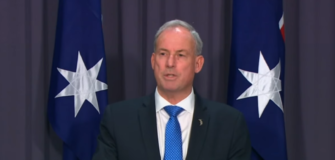How Australian Residential Aged Care Staffing Compare with International Benchmarks
Share
New research by the Australian Health Services Research Institute at the University of Wollongong has found more than half of all Australian aged care residents are in homes with staffing levels that would be rated one or two stars in the United States’ five star rating system.
How Australian residential aged care staffing levels compare with international and national benchmarks
Staffing levels and the skill mix of staff in residential aged care are significant issues for the Royal Commission to consider. The report was produced for the Royal Commission to analyse staffing of Australian residential aged care homes compared to standards in other jurisdictions. The report is available on the Royal Commission’s website.
Staffing Benchmarks
The report examines staffing benchmarks used in the United States, British Columbia in Canada, Germany, Victoria and Queensland. The report concludes the United States has the best system currently available to evaluate staffing levels.
In the US system, each aged care home is rated on a five-star scale. Three stars is the sector average, one to two stars is below average, and four to five stars is above average. The US star ratings are based on the amount of nurse and personal carer time per resident, adjusted for differences in residents’ care needs so that homes can be compared against each other.
Lower than the sector’s average
When the US system was applied to Australian data, the report found that 57.6% of all Australian aged care residents are in homes with staffing that would only rate one or two stars in the US’s five-star rating system. The authors of the report consider that one or two stars represent unacceptable levels of staffing, while three stars is acceptable, four stars is good, and five stars is best practice.
27% of Australian aged care residents are in three-star homes, while 14.1% receive four stars and just 1.3% are in homes with five stars.
Raising the standard so that all Australian aged care homes are rated at least three stars would require an average increase of 37.3% in total care staffing in the homes currently rated one or two stars. This would require an increase of 20% in total residential aged care staffing across Australia.
The report found only 2% of Australian aged care residents are in homes that would meet British Columbian allied health staffing standards.
Allied health staff (including physiotherapists) are not counted in the US system but are part of standards set in British Columbia, Canada. The report found only 2% of Australian aged care residents are in homes that would meet British Columbian allied health staffing standards.
Professor Kathy Eagar, Director of the Australian Health Services Research Institute, will be providing evidence to the Royal Commission on Monday 14 October.
Australian Health Services Research Institute
The Australian Health Services Research Institute has been operating for 26 years and is a major research flagship of the Faculty of Business at the University of Wollongong. The Institute focuses on generating real-world impact through improving health outcomes for consumers, supporting service providers to explore innovative ways of delivering high quality care and stimulating innovative policy development and health system change.
The report was prepared for the information of the Royal Commission and the public. The views expressed in it are not necessarily the views of the Commissioners.
Media enquiries can be directed to the University of Wollongong(media@uow.edu.au or +61 2 4221 4227) or the Royal Commission into Aged Care Quality and Safety (ACRCmedia@royalcommission.gov.au or 0428 298 746).
Article originally appeared on: https://ahsri.uow.edu.au/royal-commission/index.html












